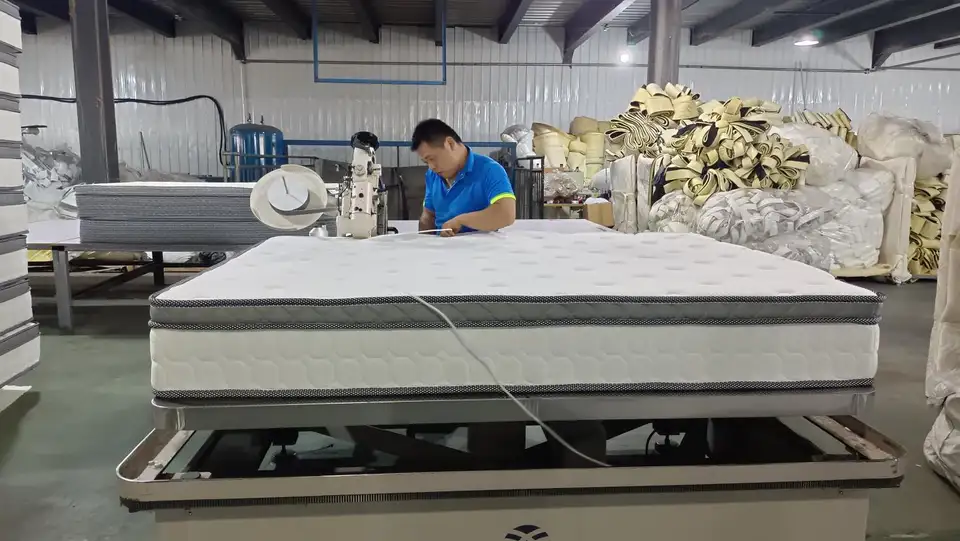Introduction: In the ever-evolving landscape of consumer goods, the mattress industry stands out as a cornerstone of comfort and wellness. As we delve into the vast world of sleep, it’s intriguing to explore the multitude of companies contributing to the manufacturing of mattresses globally. From traditional spring mattresses to cutting-edge memory foam innovations, the market is as diverse as the sleep preferences of individuals.
I. A Landscape of Diversity: 1. The Proliferation of Mattress Companies: The mattress industry has witnessed a surge in the number of companies over the years, reflecting the growing demand for quality sleep products. As of the latest data available, there are over [insert number] companies globally dedicated to crafting the perfect sleep surface.
2. Regional Dynamics: The distribution of mattress manufacturers is not uniform across the globe. Regions like North America, Europe, and Asia-Pacific dominate the landscape, each contributing significantly to the industry’s growth. North America, driven by a health-conscious consumer base, has a robust market with a multitude of well-established companies.
II. The Driving Forces Behind Growth: 1. Consumer Awareness and Health Consciousness: In recent years, there has been a noticeable shift in consumer attitudes towards sleep and overall well-being. With increased awareness about the importance of quality sleep, consumers are willing to invest in premium mattresses. This has spurred the growth of both established and emerging mattress manufacturers.
2. Technological Advancements: The integration of technology into mattress design has been a game-changer. From smart mattresses that monitor sleep patterns to temperature-regulating foams, companies are leveraging technology to provide innovative solutions for a better night’s sleep. This marriage of technology and comfort is a driving force behind the industry’s expansion.
III. The Giants and the Niche Players: 1. Established Leaders: Certain companies have become synonymous with quality mattresses. Industry giants such as Sealy, Serta, and Tempur-Pedic have not only set the benchmark for comfort but have also played pivotal roles in shaping industry trends. These companies boast extensive research and development, consistently delivering products that redefine sleep standards.
2. Niche Players and Innovation Hubs: In contrast to the behemoths, there is a thriving ecosystem of niche players and startups contributing to the industry’s dynamism. These companies often focus on specific niches, such as eco-friendly mattresses, customization options, or catering to specific health conditions. The competition and innovation stemming from these players add depth and diversity to the market.
IV. Challenges and Opportunities: 1. Sustainability and Eco-friendly Initiatives: As environmental consciousness grows, so does the demand for sustainable products. Mattress manufacturers are increasingly adopting eco-friendly materials and production processes. This shift not only addresses consumer concerns but also opens up new market opportunities for companies embracing sustainable practices.
2. Supply Chain Disruptions: The global supply chain has faced unprecedented challenges in recent times, impacting various industries, including mattress manufacturing. Companies are now compelled to rethink their supply chain strategies, exploring local sourcing and resilient logistics to navigate uncertainties and ensure a steady flow of raw materials.
V. Future Trends: 1. Customization and Personalization: The future of mattress manufacturing is moving towards customization. Companies are investing in technology that allows customers to personalize their mattresses based on individual preferences, body types, and sleep patterns. This trend aligns with the growing demand for tailored sleep solutions.
2. Smart Mattresses and Connectivity: The integration of smart technology into mattresses is expected to gain momentum. Smart mattresses, equipped with sensors and connectivity features, provide users with insights into their sleep quality. This convergence of technology and sleep is likely to redefine the mattress industry’s landscape.
Conclusion: The global mattress industry, with its myriad companies and diverse offerings, continues to evolve in response to changing consumer preferences and technological advancements. From traditional spring mattresses to futuristic smart beds, the market is a testament to the constant pursuit of better sleep. As companies navigate challenges and seize opportunities, the future promises an exciting era of innovation and enhanced sleep experiences for consumers worldwide.

